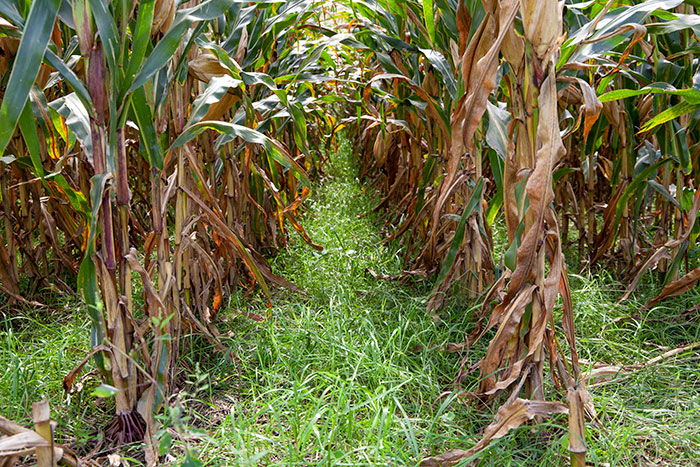
Cover crops protect soil and water quality and often provide a valuable source of livestock feed. However, not much research has been done regarding the value and viability of using cover crops for forage.
A new study supported by the Iowa Nutrient Research Center and Leopold Center for Sustainable Agriculture evaluated the use of cover crops to get a better understanding of its forage yield and quality, cattle performance, and soil health.
Cover crops were planted at three diverse Iowa State University (ISU) research farms across the state. The three treatments used were grazed cover crops of winter cereal rye and spring oats interseeded in standing corn or soybeans, ungrazed rye and oats, and no cover crop.
Because of field locations, weather patterns, and planting dates, the spring forage yields of the cereal rye varied from year to year. Between 2016 and 2018, different plots on one farm ranged from 800 to 2,900 pounds per acre of dry matter (DM). The plots at the other two farms averaged 800 pounds per acre.
In some years, the interseeded rye produced nearly 4 tons of dry matter per acre following corn silage and in other years yielded only 200 pounds per acre following full-season corn or soybeans harvested as grain.
The weather in 2018 made it difficult to establish a cover crop, so fall forage yields ranged from less than 100 pounds to over 1,600 pounds per acre on the same farm. Additionally, because of poor weather, the cover crops were not grazed to avoid soil compaction.
During a favorable growing year with stocking rates of 1.5 head per acre, the cereal rye cover crop offered 20 to 27 days of spring grazing, and in the fall, the cereal rye and oats mix offered eight to 13 days. The study shows cattle performance was similar for stocking cattle that grazed on cover crops as for cattle grazing on pasture.
Grazing cattle for a short amount of time helps control feed costs. Even if grazing isn’t a feasible option, using harvested cover crop as silage or hay can extend winter feed inventories.
Impact and establishment of cover crops
Rebecca Vittetoe, extension agronomist at ISU, notes that it is too early to know what the long-term impacts on soil carbon from grazing will be, but with proper management and cattle stocking rates, it can improve soil compaction issues and soil surface roughness. She recommends removing the cattle from the field during wet periods to avoid compaction problems later.
Managing herbicides is the most challenging aspect of using cover crops. Always check herbicide and other pesticide labels for determining how a product can impact cover crop establishment and cattle health.
Linda Shumate, the grazing adviser for the Iowa Cattlemen’s Association, notes that as land prices go up and more pastureland is being lost, the use of cover crops can be a good way to add value to cropland. The ISU research project will continue through spring 2020.

Michaela King is serving as the 2019 Hay & Forage Grower summer editorial intern. She currently attends the University of Minnesota-Twin Cities and is majoring in professional journalism and photography. King grew up on a beef farm in Big Bend, Wis., where her 4-H experiences included showing both beef and dairy cattle.

